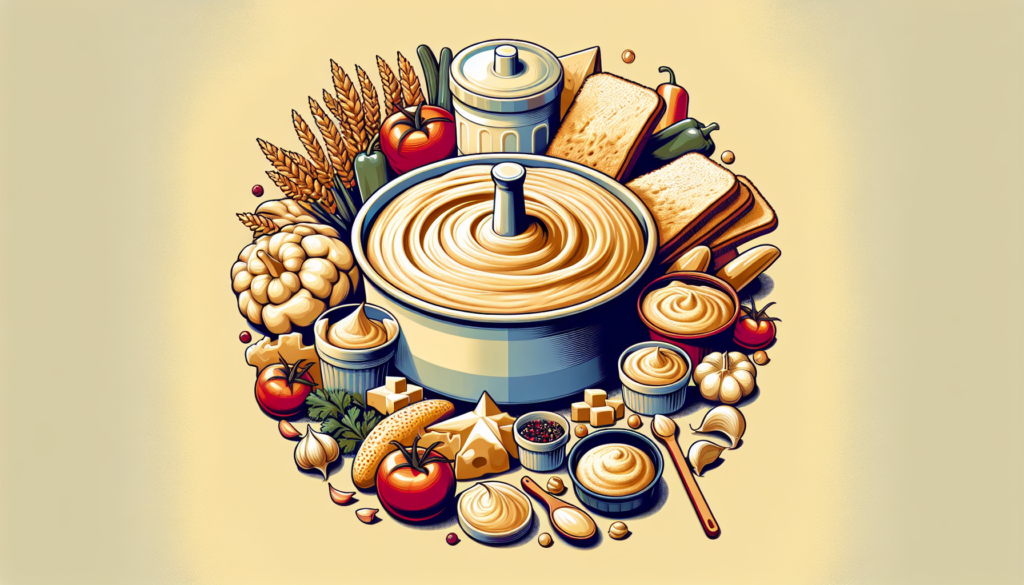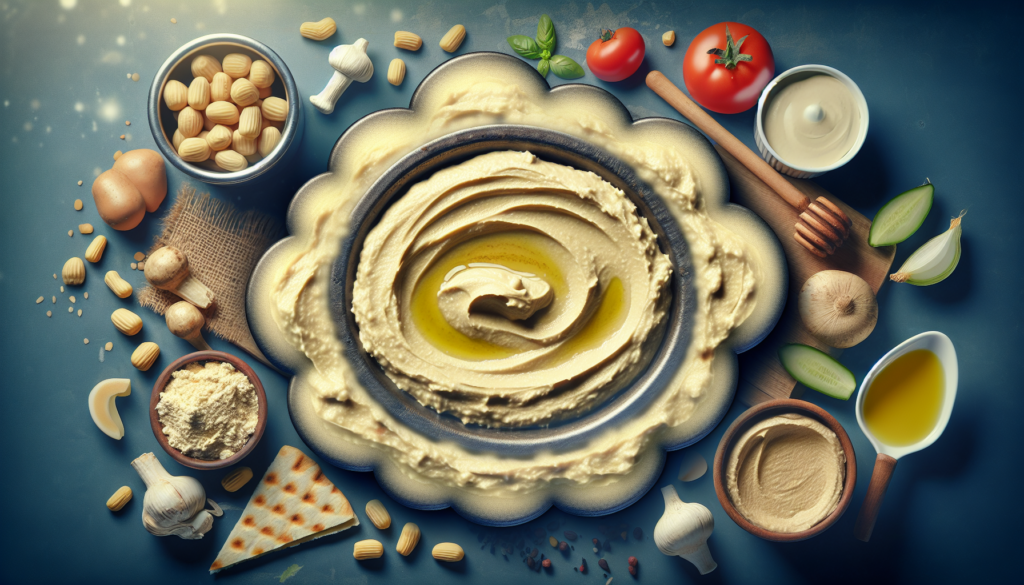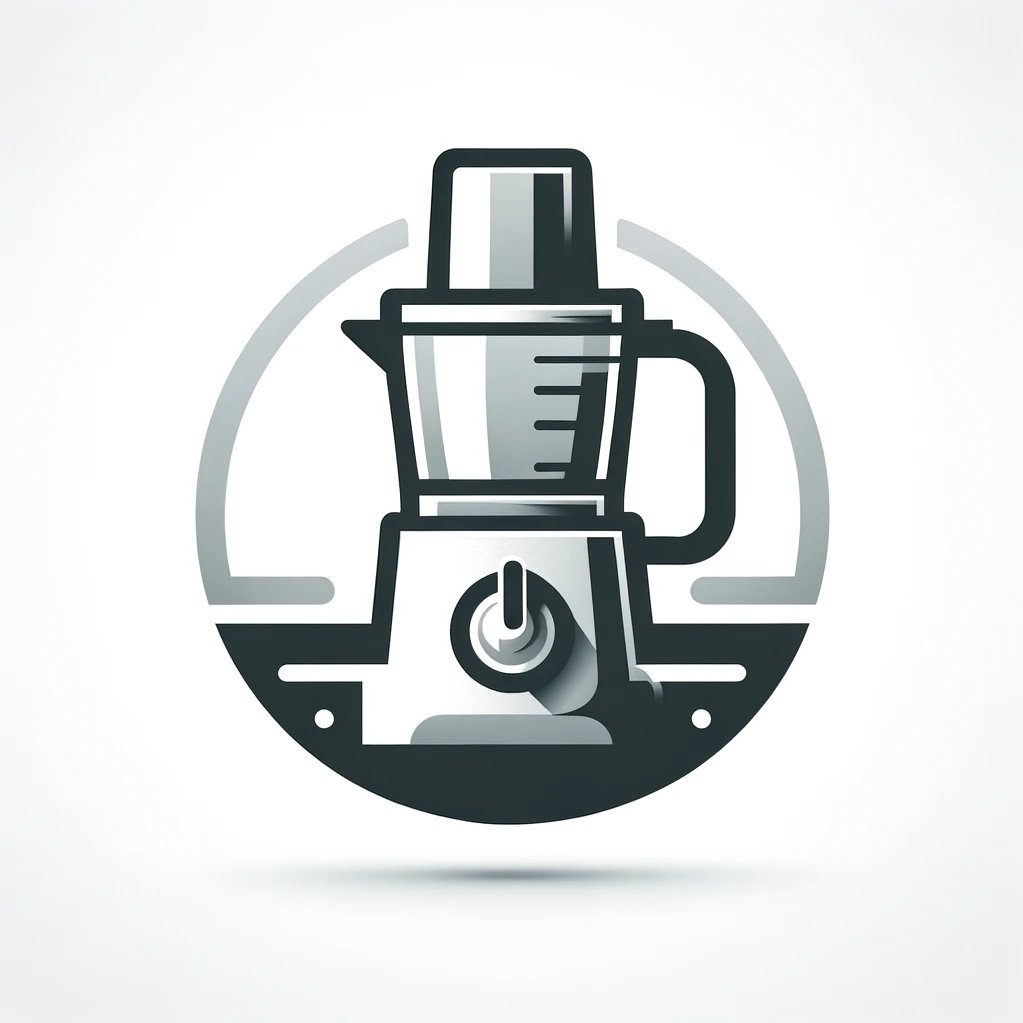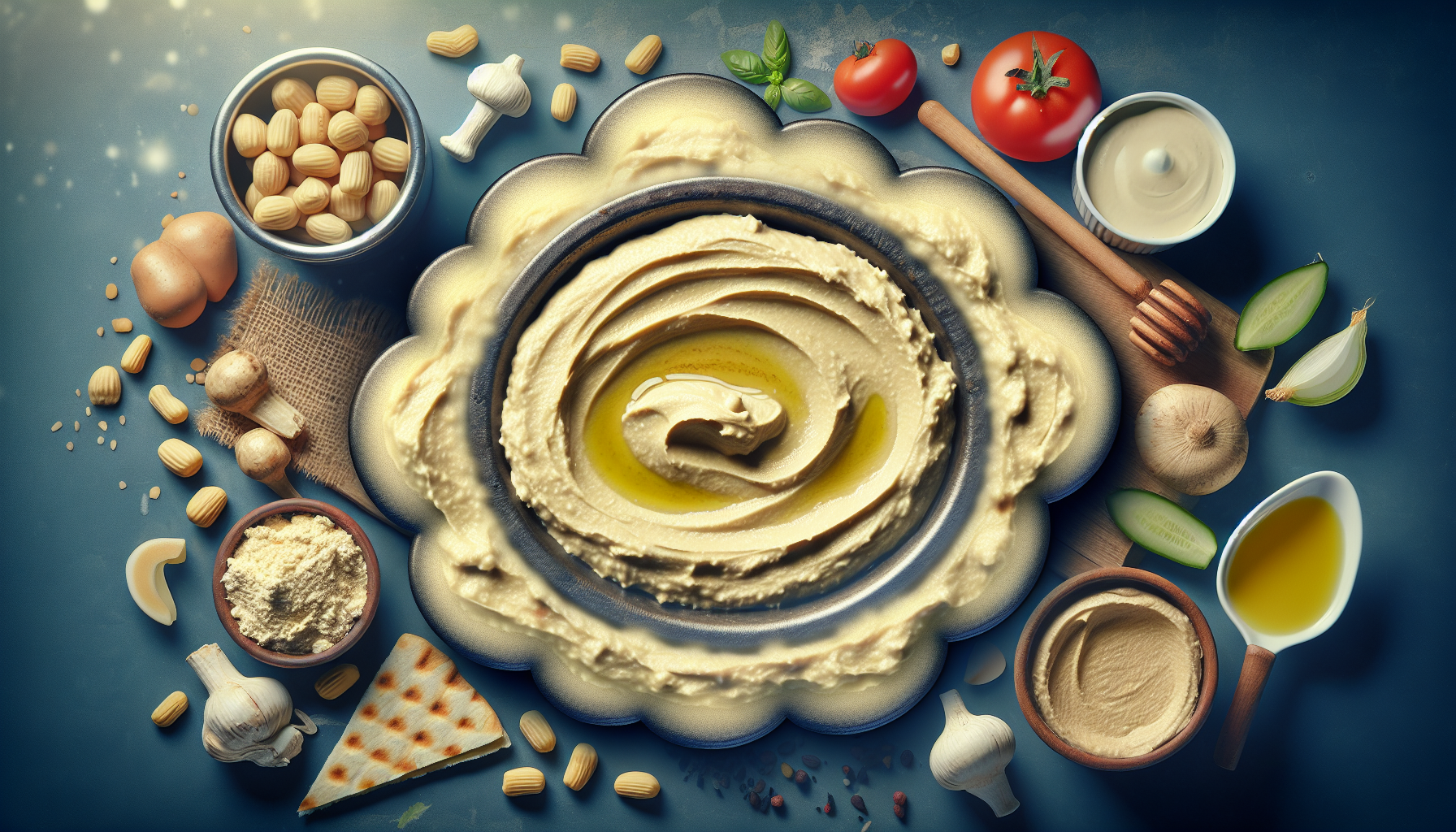If you’re someone who loves homemade hummus, you’ve probably wondered whether a food processor or a blender is the better choice for creating that smooth and creamy dip. Well, fret no more, because today we’re here to shed some light on this tasty kitchen debate. Both appliances have their own unique features, but when it comes to whipping up the perfect hummus, is a food processor truly the champion? Let’s delve into the world of hummus-making and find out!

CHECK OUT FOOD PROCESSORS AND VEGETABLE CHOPPERS ON AMAZON
Types of kitchen appliances
When it comes to kitchen appliances, there are numerous options to choose from, each serving a specific purpose. Two popular appliances that you may have come across are blenders and food processors. These versatile machines offer a range of functionalities, making them essential tools for any home cook.
Blender
Blenders are a staple in most kitchens, known for their ability to effortlessly blend and puree ingredients. They consist of a motorized base connected to a container with a built-in blade. Blenders are commonly used to make smoothies, soups, sauces, and even cocktails. They excel at creating silky, liquid-based concoctions due to the high speed at which their blades rotate.
Food processor
Food processors, on the other hand, are designed to handle more heavy-duty tasks in the kitchen. They typically come with multiple attachments, including blades of different shapes and sizes. Food processors are a great choice for slicing, shredding, chopping, and kneading dough. With their powerful motors and versatile attachments, they can handle a wide range of ingredients and tasks.
Differences between a blender and a food processor
While blenders and food processors may seem similar at first glance, there are some key differences between the two appliances that affect their performance and suitability for certain tasks.
Functionality
One of the main differences between blenders and food processors lies in their functionality. Blenders specialize in blending and pureeing, making them ideal for tasks that require liquids or semi-liquids. Food processors, on the other hand, excel in tasks involving solid ingredients, such as chopping vegetables or kneading dough.
Blade design
The blades of blenders and food processors also differ in their design. Blender blades are typically larger and positioned lower in the container, allowing for smoother blending of liquids. Food processor blades, on the other hand, are smaller and positioned higher, enabling them to perform precise cutting and chopping actions.
Power
Another factor to consider is the power of the motor. Blenders generally have more powerful motors compared to food processors. This added power allows blenders to blend tough ingredients, such as ice or frozen fruits, with ease. Food processors, while still powerful, may require more time and effort to achieve the same results with these types of ingredients.
Container size
Blenders typically have larger containers compared to food processors. This larger capacity makes blenders better suited for tasks that require larger volumes, such as making multiple servings of smoothies or soups. Food processors, on the other hand, have smaller containers that are more suitable for processing smaller quantities, making them ideal for tasks like chopping herbs or grinding spices.
Preparing hummus
Hummus, a popular Middle Eastern dip made from chickpeas, is a versatile and delicious addition to any meal. When it comes to preparing hummus, the consistency plays a crucial role in achieving the desired texture.
Ingredients
The basic ingredients for hummus include cooked chickpeas, tahini (a paste made from sesame seeds), garlic, lemon juice, olive oil, and salt. These simple ingredients combine to create a flavorful and creamy dip.
Consistency
The consistency of hummus can vary depending on personal preference. Some individuals prefer a smooth and creamy texture, while others enjoy a chunkier and more textured dip. Depending on your desired consistency, you can choose between a blender or a food processor to prepare your hummus.

CHECK OUT FOOD PROCESSORS AND VEGETABLE CHOPPERS ON AMAZON
Blender for hummus
Using a blender to make hummus offers several advantages that can help you achieve the desired texture and consistency.
Advantages
Blenders are excellent at creating smooth and creamy blends. The high speed at which their blades rotate ensures that the chickpeas are thoroughly pureed, resulting in a velvety texture. Blenders also allow for better control over the ingredients, ensuring a consistent and well-blended hummus.
Disadvantages
Although blenders can produce smooth and creamy hummus, they may struggle with certain ingredients, especially if they are not sufficiently softened. Harder ingredients might require additional blending time or the need to stop and scrape down the sides of the container to ensure even blending.
Food processor for hummus
While blenders are often the go-to choice for making hummus, food processors also have their advantages when it comes to preparing this delicious dip.
Advantages
Food processors excel at handling solid ingredients. When making hummus, this means that the food processor can easily blend the chickpeas and other ingredients while maintaining a chunkier texture. The higher position of the blades in a food processor also allows for better control over the desired consistency.
Disadvantages
While food processors can create a chunky and textured hummus, they may struggle with achieving a completely smooth and creamy consistency. The blades of food processors are not as effective at pureeing as the high-speed blades of blenders. This can result in a slightly grainy texture, especially if the chickpeas are not sufficiently processed.
Texture of hummus
The texture of hummus can greatly impact the overall enjoyment of this popular dip. Whether you prefer a smooth and creamy or a chunky and textured hummus, understanding the different methods will allow you to achieve the desired outcome.
Smooth and creamy
Smooth and creamy hummus is the more traditional and widely preferred texture. It is velvety in consistency, making it perfect for dipping and spreading.
Chunky and textured
For those who enjoy a heartier and more rustic hummus, a chunky and textured variation may be the way to go. This type of hummus offers a satisfying bite and can be enhanced by adding additional ingredients like diced vegetables or herbs.
Creating a smooth and creamy hummus
If you prefer a smooth and creamy hummus, both blenders and food processors can help you achieve this desired texture.
Blender method
To create a smooth and creamy hummus using a blender, start by adding the cooked chickpeas, tahini, garlic, lemon juice, olive oil, and salt to the blender container. Secure the lid and blend on high speed until the ingredients are thoroughly pureed and the desired texture is achieved. Stop occasionally to scrape down the sides of the container, ensuring even blending.
Food processor method
When using a food processor to make smooth and creamy hummus, follow a similar process. Add the chickpeas, tahini, garlic, lemon juice, olive oil, and salt to the food processor container. Process the ingredients until they are well combined and reach the desired smoothness. Again, scraping down the sides of the container may be necessary to ensure even processing.
Creating a chunky and textured hummus
For those who prefer a chunkier and more textured hummus, both blenders and food processors are capable of achieving this desired outcome.
Blender method
To create a chunky and textured hummus using a blender, start by adding a portion of the chickpeas to the blender container. Pulse the blender a few times to roughly chop the chickpeas without completely pureeing them. Transfer the partially chopped chickpeas to a separate bowl. Repeat this process with the remaining ingredients, adding them to the bowl of partially chopped chickpeas. Mix everything together until well combined, adjusting the consistency as desired.
Food processor method
Using a food processor for a chunky and textured hummus follows a similar process. Add a portion of the chickpeas to the food processor container and pulse a few times to achieve a rough chop. Transfer the partially chopped chickpeas to a separate bowl and repeat the process with the remaining ingredients. Combine everything in the bowl, adjusting the texture as desired.
Versatility of appliances
While we’ve focused on using blenders and food processors for making hummus, it’s worth noting that these appliances have a range of other uses in the kitchen.
Usage beyond hummus
Blenders can be used to make a variety of smoothies, frozen cocktails, soups, sauces, and dressings. They excel at creating silky textures and can even be used to crush ice for refreshing beverages.
Food processors are excellent for chopping, shredding, slicing, and pureeing ingredients. They are particularly useful for grating cheese, making homemade nut butters, blending pie crusts, and kneading dough.
Other recipes
Beyond hummus, blenders and food processors can be utilized in countless recipes. Blenders can whip up delicious fruit smoothies, creamy milkshakes, or even homemade nut milks. Food processors are perfect for creating salsas, pesto sauces, and even homemade breadcrumbs. The possibilities in the kitchen are endless with these versatile appliances.
Conclusion
In the eternal blender vs. food processor debate for making hummus, both appliances have their advantages and disadvantages. Blenders excel at creating smooth, creamy blends, while food processors offer more control and can achieve a chunkier texture. Ultimately, the choice between the two depends on personal preference and the desired consistency of your hummus. Whichever you choose, both blenders and food processors are indispensable tools in the kitchen, with multiple uses beyond just making hummus.

